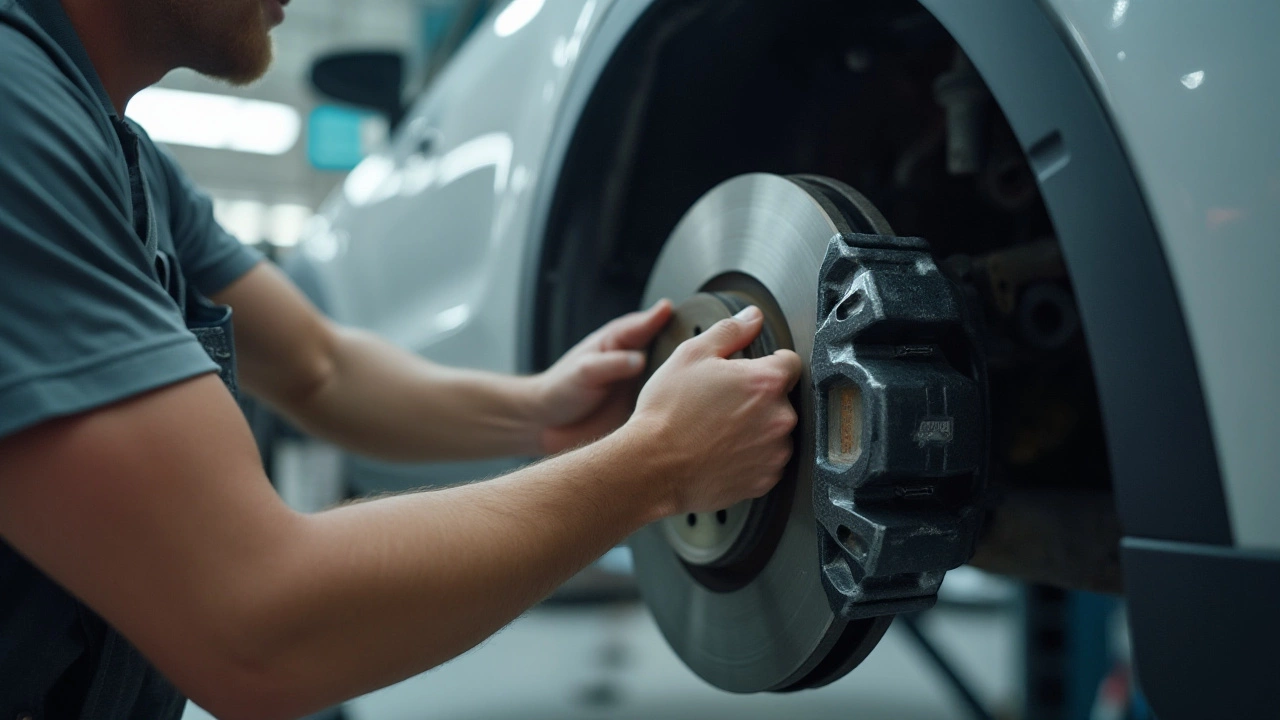Rear Brakes: What You Need to Know
When dealing with rear brakes, the braking system located at the back wheels of a vehicle. Also called back brakes, it helps slow the car and keep it stable during stops, you’ll quickly see how they link to several other parts. One of the most direct connections is to brake pads, friction blocks that press against the rotor to create stopping power. Those pads work hand‑in‑hand with brake rotors, metal discs that the pads clamp to, turning kinetic energy into heat. And none of this works without brake fluid, a hydraulic liquid that transfers force from the pedal to the calipers. In short, rear brakes encompass pads, rotors, and fluid, each influencing the others and the overall safety of your ride.
Key Components of Rear Brakes
Understanding the three core pieces—pads, rotors, and fluid—makes maintenance much easier. Brake pads wear down over time; a common sign is a squealing noise when you press the pedal. When pads get too thin, they can’t grip the rotor properly, leading to longer stopping distances. Rotors, on the other hand, can warp or develop grooves if they overheat, especially on steep descents. Spotting a pulsating brake pedal or a vibration in the steering wheel often points to rotor trouble. Finally, brake fluid absorbs moisture, which lowers its boiling point and can cause a spongy feel at the pedal. Checking fluid level and color every few months helps catch contamination early.
Another piece that often shows up in the conversation is the brake caliper. The caliper houses the piston that pushes the pads onto the rotor, and it relies on clean fluid and proper seal integrity to function smoothly. A sticking caliper can cause one rear wheel to drag, leading to uneven pad wear and reduced fuel efficiency. Regularly cleaning the caliper bolts and inspecting the piston for leaks can prevent these headaches. If you’ve ever noticed a car pulling to one side while braking, the rear brake caliper is a likely suspect.
Rear brakes don’t work in isolation; they’re part of the wider anti‑lock braking system (ABS). ABS monitors wheel speed and briefly releases pressure to prevent lock‑up during hard stops. When the rear wheel speed sensor feeds faulty data, the ABS may intervene at the wrong moment, causing a choppy feel. Keeping the sensor clean and checking its wiring during brake service helps maintain ABS performance. This link shows how rear‑brake health directly influences electronic safety aids.
Maintenance tips boil down to a routine check‑list: inspect pad thickness, look for rotor scoring, test fluid clarity, and verify caliper movement. Swapping pads and rotors together is often cheaper because you avoid mismatched wear patterns. When you replace pads, it’s a good idea to bleed the brake system to remove any air bubbles that might have entered. Doing these steps yourself can save money, but if you’re unsure, a professional can verify that the rear‑brake system is balanced and safe. Now that you’ve got the basics of rear‑brake components, wear signs, and how they tie into ABS, you’re ready to explore the detailed articles below. They cover everything from pad‑replacement intervals to rotor‑resurfacing decisions, giving you the practical know‑how to keep your rear brakes performing at their best.

Which Brakes Wear Out First: Front or Rear?
Jan 1 2025 / AutomotiveUnderstanding which brakes wear out first can save you time and money, ensuring safer driving. Front brakes generally wear faster due to the vehicle’s weight distribution during braking. This article delves into the various factors that influence brake wear, maintenance tips, and how to identify signs of wear, keeping you informed and prepared.
VIEW MORE